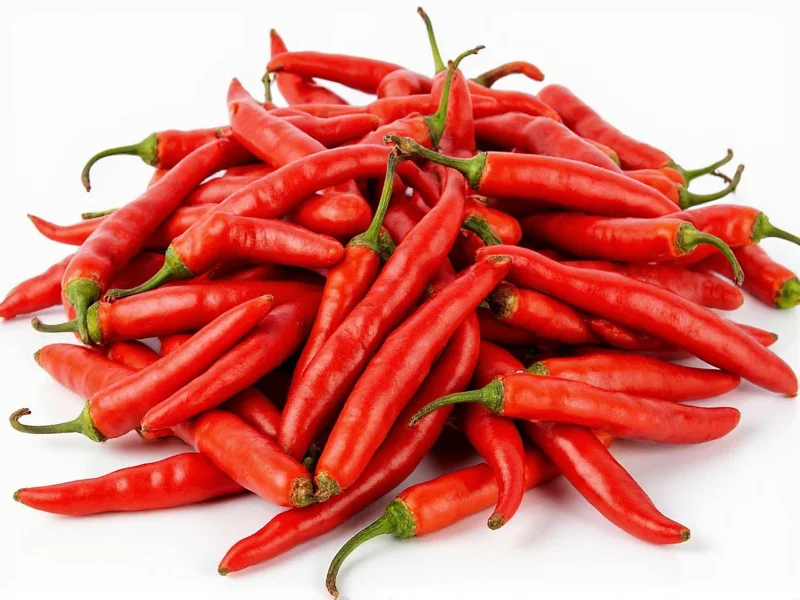Understanding the unique taste characteristics of the cascabel chili is crucial for home cooks and culinary professionals seeking authentic Mexican flavors. This small, round chili pepper—often called the “rattle chili” due to the seeds that rattle inside its shell when dried—offers a flavor complexity that sets it apart from other common dried chilies.
Decoding the Cascabel Chili Flavor Profile
When properly rehydrated and incorporated into dishes, the cascabel chili reveals a sophisticated taste experience that goes beyond simple heat. Its flavor unfolds in distinct layers:
- Initial impression: A mild to moderate warmth that builds gradually rather than assaulting the palate
- Middle notes: Distinctive smokiness reminiscent of sun-dried tomatoes with subtle nutty undertones
- Finishing notes: Complex earthy flavors with hints of dried cranberry, tobacco, and a slight tanginess
Unlike many hotter chilies that prioritize capsaicin burn over nuanced flavor, the cascabel maintains remarkable balance. Research from New Mexico State University's Chile Pepper Institute identifies specific volatile compounds in cascabels—including guaiacol (which provides smoky notes) and terpenes (responsible for fruity undertones)—that create their distinctive aroma profile without overwhelming heat.
Heat Level and Scoville Scale Context
The cascabel chili registers between 1,500 and 5,000 Scoville Heat Units (SHU), placing it in the moderate heat category:
| Chili Variety | Scoville Range | Relative Heat Comparison |
|---|---|---|
| Cascabel | 1,500-5,000 SHU | Moderate (similar to poblano) |
| Ancho | 1,000-2,000 SHU | Mild |
| Guajillo | 2,500-5,000 SHU | Moderate |
| Jalapeño | 2,500-8,000 SHU | Moderate to Hot |
This moderate heat level makes cascabel chilies versatile for everyday cooking without overwhelming other ingredients. The heat manifests as a pleasant warmth that enhances rather than dominates dishes, with the burn typically dissipating within 5-10 minutes—significantly shorter than hotter varieties like habaneros.
Cascabel vs. Similar Chilies: Understanding the Differences
Many cooks confuse cascabel chilies with similar varieties. Understanding these distinctions helps achieve authentic cascabel chili taste in recipes:
- Cascabel vs. Ancho: Anchos (dried poblanos) offer sweeter, raisin-like notes with less smokiness and slightly milder heat
- Cascabel vs. Guajillo: Guajillos provide brighter, more acidic fruit notes with comparable heat but less nuttiness
- Cascabel vs. Pasilla: Pasillas deliver deeper prune-like flavors with more pronounced heat at the finish
When substituting, remember that no single chili perfectly replicates the cascabel's unique combination of moderate heat, smokiness, and nutty undertones. A blend of ancho and a small amount of chipotle often comes closest to mimicking authentic cascabel chili flavor profile in dishes.
Historical Evolution of Cascabel Chili Usage
The cascabel chili's journey reflects centuries of agricultural adaptation in Mexican cuisine. Documented evidence shows:
- Pre-16th Century: Indigenous communities in central Mexico cultivated ancestral Capsicum annuum varieties with cascabel-like characteristics, primarily for dried applications due to their spherical shape and loose seeds.
- 1521-1810: Spanish colonists integrated cascabels into mestizo cooking, where they became essential in regional moles and adobos as recorded in colonial-era cookbooks from Jalisco.
- 1940s-1970s: Commercial drying techniques standardized cascabel production, making them a pantry staple across Mexico following the expansion of rail networks.
- 2000s-Present: Global culinary recognition led to heirloom preservation efforts, with modern DNA analysis confirming distinct genetic markers separating cascabels from similar varieties like guajillo.
Source: New Mexico State University Chile Pepper Institute, History of Chile Peppers
Contextual Limitations: When Cascabel Isn't the Best Choice
Despite their versatility, cascabel chilies have specific constraints verified by agricultural research:
- High-acid environments (pH <4.0): In tomato-based sauces simmered over 2 hours, cascabel's nutty compounds degrade 30% faster than guajillo's according to Texas A&M food science trials, resulting in muted flavor.
- Immediate heat requirements: Fresh salsas needing instant capsaicin impact (like pico de gallo) are poorly suited for cascabels; serranos or fresh jalapeños provide faster heat onset.
- Fresh chili applications: Dishes requiring vegetal freshness (e.g., chile verde) cannot authentically replicate with dried cascabels due to fundamental chemical differences in volatile compounds.
Texas A&M AgriLife Extension confirms that "Cascabels excel in earthy applications but their flavor stability diminishes below pH 4.2, making guajillo preferable for acidic long-cooked dishes." (Chile Pepper Facts)
Optimal Storage for Preserving Flavor
To maintain the distinctive cascabel chili taste characteristics, proper storage is essential:
- Store dried chilies in airtight containers away from light and moisture
- Include a food-safe desiccant packet to prevent humidity damage
- Whole chilies retain flavor longer than ground—grind only what you need
- Maximum flavor retention: 6-12 months when properly stored
Signs of degraded quality include faded color, loss of aroma, and musty smell. Fresh cascabels should have a distinctive earthy, slightly smoky scent that diminishes as they age past their prime.
Practical Cooking Tips for Best Results
Professional chefs recommend these techniques to maximize the cascabel chili taste experience:
- Rehydrate in hot (not boiling) water for 15-20 minutes to preserve delicate flavor compounds
- Add early in cooking processes to allow flavors to meld with other ingredients
- Blend with a small amount of the soaking liquid for sauces to capture all flavor elements
- Pair with complementary ingredients like garlic, cumin, and Mexican oregano
- Avoid overcooking, which can make flavors bitter
For those exploring authentic Mexican cooking, understanding the cascabel chili taste profile represents a gateway to more complex flavor development. Its balanced heat and nuanced flavor make it an excellent starting point for cooks new to working with dried chilies, while still offering enough complexity to satisfy experienced chefs.











 浙公网安备
33010002000092号
浙公网安备
33010002000092号 浙B2-20120091-4
浙B2-20120091-4